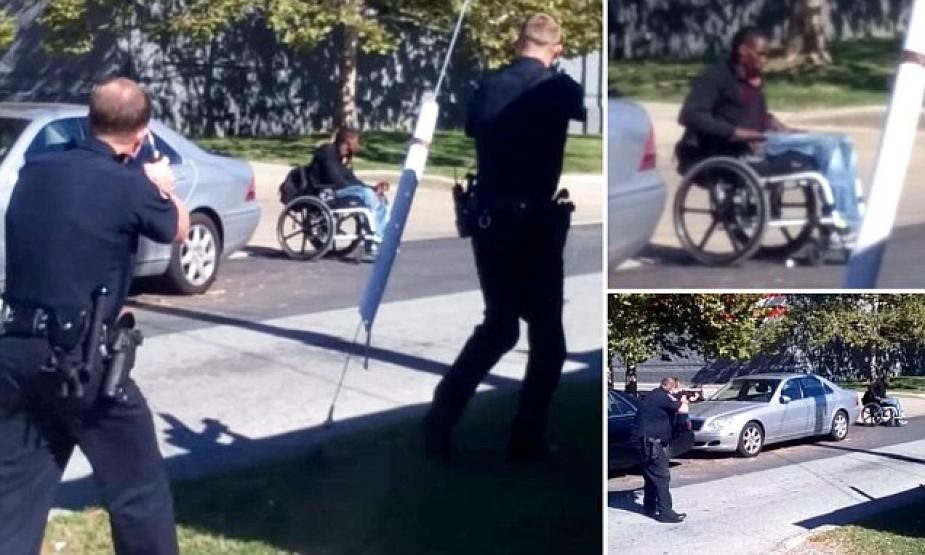A law enforcement officer’s life is never easy, especially when it comes to responding to calls. A law enforcement officer can never know what can happen or whether they will come home alive. Often, the uncertainty of confronting a suspect can have deadly consequences. A simple misunderstanding can result in death.
An often-overlooked fact is that individuals with disabilities account for one-third to half of all people killed by law enforcement officers. A Ruderman Foundation report in 2016, stated that disabled individuals make up a majority of those killed by law enforcement officers. Often those officers involved are exonerated. The media sometimes ignore the disability component of such shootings. In some situations, the media report stories that intensify stigma and ableism. When disabled Americans are killed, their stories can be lost or segregated from each other in the media. Because of this, we miss an opportunity to learn from tragedies, identify patterns, and push for necessary reforms.
For instance, in August 2016 alone, 3 disabled men were shot by law enforcement. Misunderstanding and communication breakdown were the main factor in these deaths. Daniel Harris, a Deaf man was killed by a law enforcement officer after a car chase in North Carolina. Two weeks earlier, a hearing disabled man, Darnell Wicker, was killed by law enforcement officers responding to a 911 call in Kentucky. On the same day as Harris’ death, Joseph Weber, of Hays, KS was killed in an officer-involved shooting. From reports, it has been shown that Weber may have been autistic. Both Weber and Harris were killed after traffic infractions. Harris was speeding and Weber for failing to follow commands.
The following are summaries of each cases:
- Darnell Wicker, a deafened 57-year-old military veteran, was shot by police officers. These officers were responding to a domestic violence call in Louisville, KY. Wicker is deaf in one ear and has severe hearing loss in his other ear. He came outside holding a knife and a tree saw. These were the tools that Wicker used in maintaining gardens in his neighborhood. It appears that Wicker was shot for not following shouted commands. (Source)
- In Hays, KS, 36-year-old Joseph Weber, was shot and killed by a police officer. School friends of Weber says that he was autistic and was a gentle person. They say he kept mostly to himself and was liked by almost everyone. The Hays police officer stopped his vehicle for a traffic infraction after a chase. Weber was shot outside his home after the officer claimed that Weber did not obey commands. (Source)
- Daniel Harris was a 29-year-old Deaf person was also shot outside his home. It appears that Harris was speeding on I-485 in Charlotte, NC when a North Carolina State Trooper gave chase. After a 7-mile chase, Harris arrived at his home and was shot when he was exiting his car. Apparently, Harris was trying to get help from the only safe place he knew, which was home. (Source)
From the above incidents in August 2016, communication breakdown could be the main factor. Lack of awareness of the communication needs of these individuals could be a main factor. Such communication breakdown between police and these disabled individuals often end fatally. The BBC News reported on October 4, 2018 that “in 2018, across the US, at least 136 people with a disability are known to have been killed by police officers, according to a database maintained by the Washington Post and analysis of local media reports.” The database maintained by The Washington Post shows that of the 963 individuals shot and killed by police in 2016, 242 individuals had mental illness while 721 individuals, either did not have or were unsure if they had mental illness.
The bottom line is that law enforcement agencies should be aware of the provisions within the ADA. The law applies to both Title II (local and state government) and Title III (Private businesses that provide public accommodations) entities. Awareness of the ADA Effective Communication requirement is available through training. The basic goal of this rule is to ensure that communication is effective for everyone, disabled or not.
The ADA has several helpful documents on how to interact with individuals who may have disabilities, both visible and invisible. A list of such publications are available at Americans with Disabilities Act: Information for Law Enforcement.
Of particular interest would be the 12 page factsheet on Commonly Asked Questions about the Americans with Disabilities Act and Law Enforcement, which should answer the most relevant questions commonly encountered by Law Enforcement personnel.

Next month, this blog will be followed by a second part that will focus on possible solutions to reduce the number of fatal encounters between Law Enforcement and individuals with disabilities. Stay tuned!